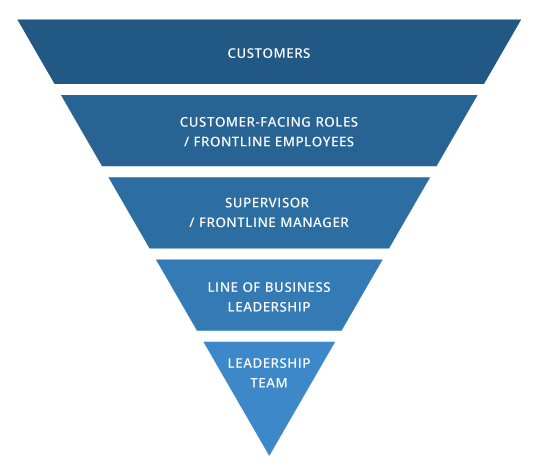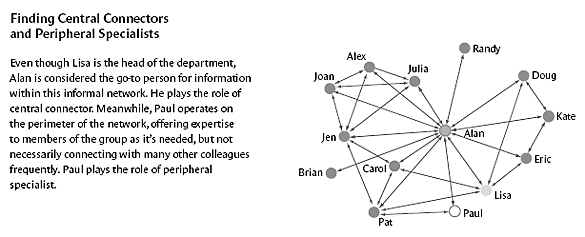How to Build & Manage Great Teams, Part One: What Defines a Great Team?
Image

Hardly anyone does their job in complete solitude. We all collaborate with team members and stakeholders to meet goals. Even if you are a solopreneur, working on your own, you still work with and for clients.
When a team is working at maximum efficiency—when the people and processes really click—it feels magical, almost effortless. It’s like coasting downhill on a bike, breezing past the scenery. On the flipside, a bad team dynamic makes work feel like, well, work. Like riding a bike uphill. With a squeaky chain. And square wheels.
I’ve been managing teams for well over ten years and I’ve been a member of teams in many different roles: CEO, manager, developer, support tech, teacher, roofer, factory worker and more. Those experiences and responsibilities have taught me a lot about team management and it’s evolved over the years as I sought out inspiration, borrowed ideas from others, tried out new methods and learned what did and didn’t work.
There’s no silver bullet, of course; no team will ever be free of friction or issues. But the right approach to building and managing teams can minimize that friction, and provide a framework for dealing with issues in a quick and efficient way.
Over the next few articles, I’ll unpack the most important lessons I have learned about team management over the years. Let’s start with the five fundamental aspects of a great team.
1. A Shared Purpose
The question at the heart of building a team is, “why does this team exist?” To answer it, put your heads together and determine what your particular team can do better than anyone else. Then use those strengths to set goals. Make sure each person knows and agrees on what the team’s ultimate goal is. And, even more critically, make sure everyone knows why that goal was set and why it matters.
I recommend drafting a statement of purpose for your team, together with your team, in plain and simple language. For example, compare these two purpose statements:
The Adidas Group strives to be the global leader in the sporting goods industry with brands built on a passion for sports and a sporting lifestyle.
-Adidas
Bring inspiration and innovation to every athlete* in the world.
*if you have a body, you are an athlete.-Nike
While Adidas and Nike are competitors in some ways, they also aspire to very different goals. By clearly stating their intent, they're able to attract people who are inspired by that goal. Nike’s is more inspiring to me personally, but I know many people see the Adidas statement and identify strongly with it. By describing themselves in a way that feels authentic to themselves, each of these groups is able to attract people who will likewise be inspired and contribute to the missions of these organizations.
Nike and Adidas are huge organizations. Most of us probably work for much smaller organizations and our individual teams are even smaller yet. Large organizations are teams of teams - and each of those teams ought to have it’s own purpose clearly defined.
Having this clearly-expressed statement of purpose unites the team and provides something bigger than the work at hand, something the team can aspire to and strive towards.
2. Distributed Power
If you’re working on the web your team probably needs to deliver creative solutions to problems. Unfortunately, traditional top-down command structure doesn’t work for creativity and problem solving. People need power to solve the problems they encounter on a daily basis: Give it to them. The people closest to a problem should always have the biggest input on the potential solution.
In practice, that means managers need to get used to the phrase “What do you think we should do?” when someone on the team brings a problem. Managers ask the team to help solve problems. Create a plan together and implement it as a team.
This concept is often referred to as inverting the org chart and it helps put the power to problem-solve where it can do the most good.
Image

3. Diversity
Diversity can mean differences in race, gender, religion, age, and more. There are all kinds of ways of diversity improves results, and research repeatedly shows that diversity is a hallmark of top-performing teams. Credit Suisse did a massive study of 2,400 organizations to uncover hidden factors that contributed to a company’s success. Among the conclusions: having at least one woman on the board of directors predicted better financial outcomes for a company.
That’s a pretty amazing conclusion: simply having at least one woman in the boardroom makes a company more profitable. Credit Suisse isn’t in the business of promoting idealistic principles to make a better world or sing kumbaya in a circle. Credit Suisse is in the business of making LOTS of money. As of 2014 they managed around 900 billion(!) US dollars worth of investments. They wanted to know how to make even more money. To get to this, they poured through data from thousands of organizations for any possible traits that could tell them which companies to invest in… and found out that having more than one gender on a company’s board of directors predicts better financial performance.
How on earth can the be true? The simple answer that many of us have learned is that differing viewpoints and life experience will lead to better variety of ideas, and rubbing these ideas together is likely to generate creative sparks. But there’s an even more powerful process happening; diverse teams force people to question their own assumptions. Social sciences have devised a number of experiments and studies to examine this, but it turns out that when we work with others who have different backgrounds than ourselves, we spend more time critically examining our own ideas and recommendations. That extra work produces better outcomes. Preaching to the choir is easy; when not everyone shares your worldview, it forces you to think deeper.
This effect is profound and goes well beyond gender, race and religion (although those are very powerful). It also applies to political beliefs, age and almost any other factor that we can recognize as different from our own background. Diverse teams make us all work harder and that produces better outcomes.
4. Networked Communication
The default mode for old-school corporate communication is siloed and linear; employees talk to management, not each other, which creates a bottleneck for problem-solving.
A better model looks more like a net. It’s a communication matrix, with people connecting to each other at every level:
Image

It’s easy to see how more fluid communication can eliminate bottlenecks and promote problem-solving. To help foster this type of flow, empower everyone on your team to speak to each other, lead important conversations and set discussion agendas.
One particular type of communication is bound to slow down your team: Unnecessary meetings. My least favorite meeting is what I call the “report-only status update.” You may know the drill: Everyone takes five-to-ten minutes to give a status report, and while one person is talking, everyone else is multi-tasking. It’s a remarkably efficient way to waste a roomful of people’s time. Break out of siloed, linear conversations; great teams communicate with each other constantly and organically. Great teams don’t wait on meetings to share things; they communicate constantly and use meetings to come together, confirm, decide and act.
5. The Right People in the Right Seats
This phrase was popularized by Jim Collins in Good to Great. The whole book is a worthwhile read, but one of the traits of great teams is that they put the right people into the right seats. The idea is basic; the world’s most brilliant coder may fail in a managerial role. The best marketer in the world may not excel at graphic design. To truly reach your team’s full potential, you have to match people’s skills and interests with the right role.
Start by defining your “seats:” what needs doing, and why? Lay out the skills required for each of these roles. Then look at what people on your team love doing and what they’re best at. Don’t do that in a vacuum, mind you; it’s important for people to be able to grow and try new things. If someone on the team already wants to try a new role, great! Have direct conversations about what that role requires and how that’s both a challenge and an opportunity. Then make a decision. If it succeeds - great! If there are problems, that’s ok, too. You’ve already set the groundwork for addressing issues and moving forward.
It’s important not to let seat-filling become a personality or seniority contest. Evaluate the skills, not the resume to get the best fit for the role.
If someone is failing in their role, don’t let them flounder. Provide the support the person needs to meet the role’s challenges, and if that doesn’t work, move them out of the role quickly. Keeping someone in a role that doesn’t fit is bad for the person and the team.
Everything is a Team Sport
When your team is united around a shared vision, empowered to communicate and problem-solve, and has the right people in the right roles, you’re far more likely to achieve great work. It takes conscious, strategic effort to invert the org chart and promote that kind of empowerment, but it’s well worth the endeavor.
As your team ramps up their abilities, your success will inevitably mean you’ll need to expand the team. In the next post, I’ll cover how to find the right people and manage them effectively.
Looking to join an amazing team? Pantheon is hiring.
Want to explore what our team has built? Create a free account on Pantheon.
This is the 1st post in a series of articles on great teams. Read the rest: